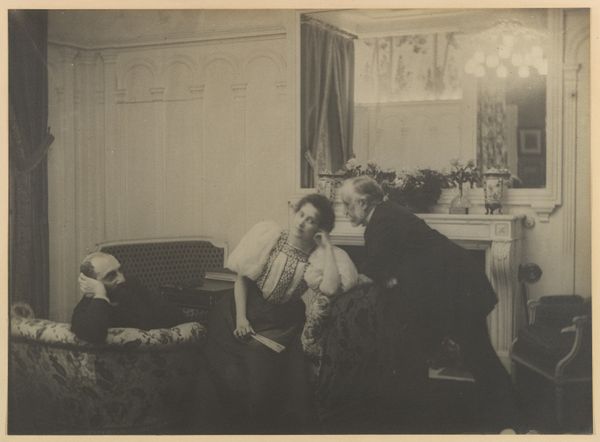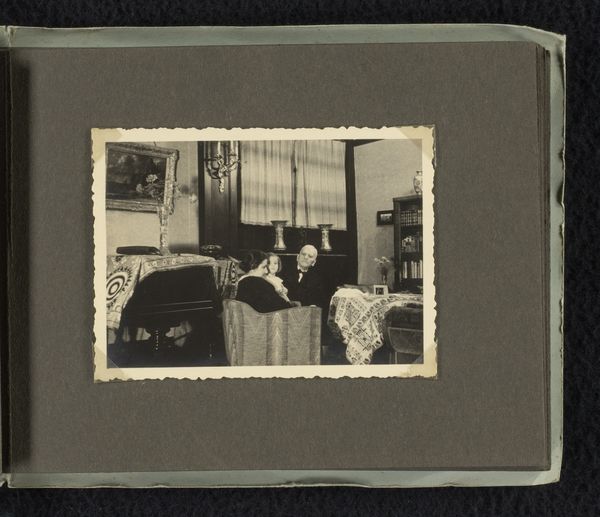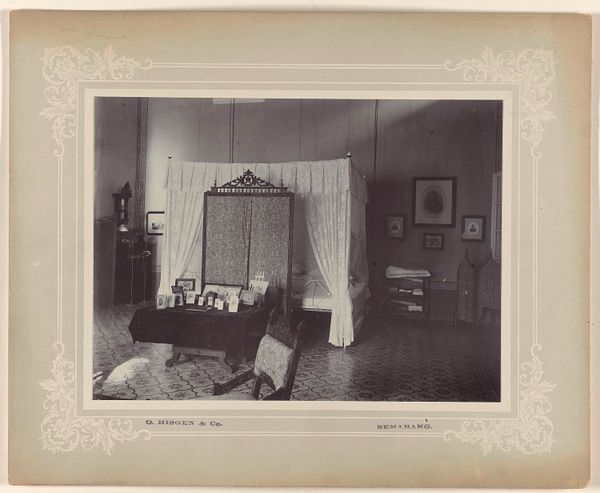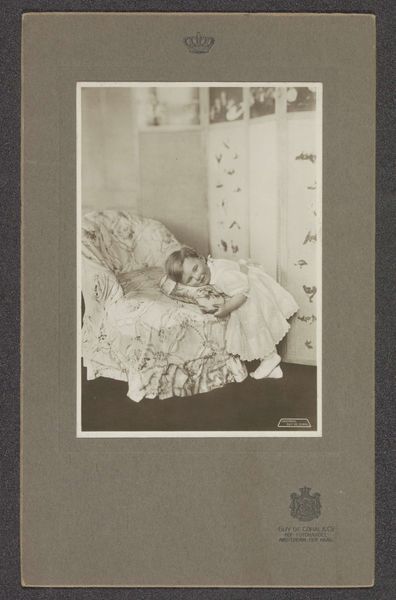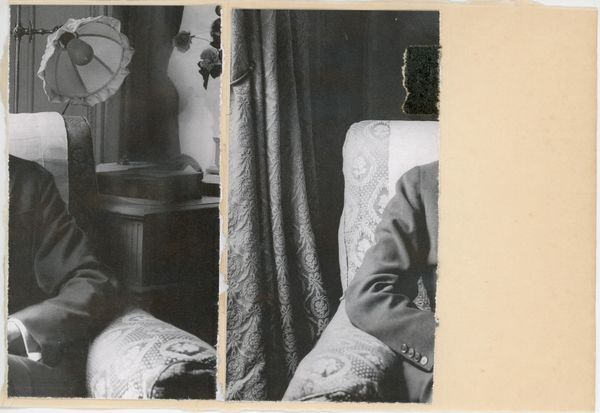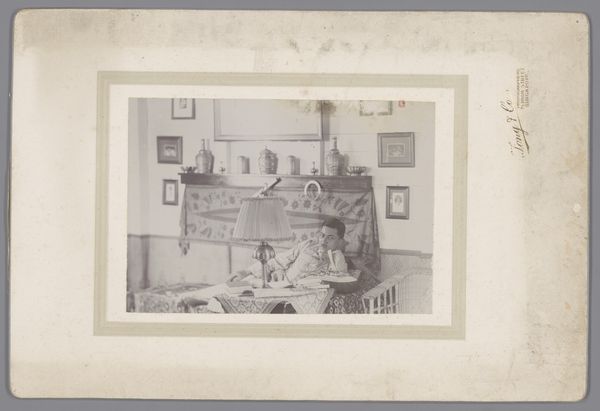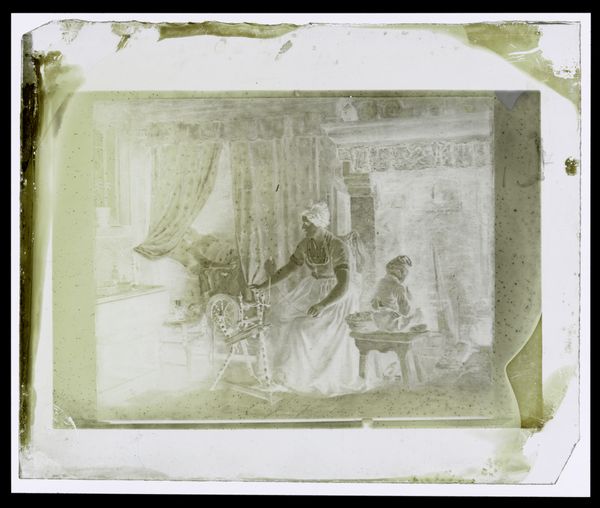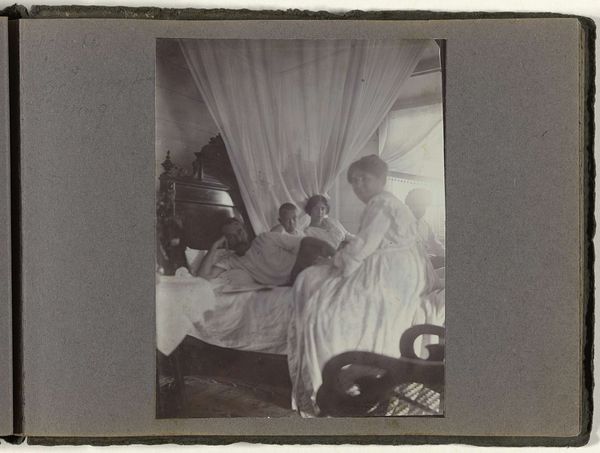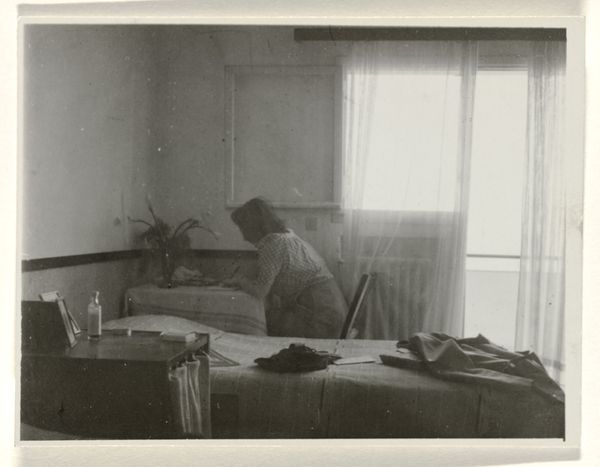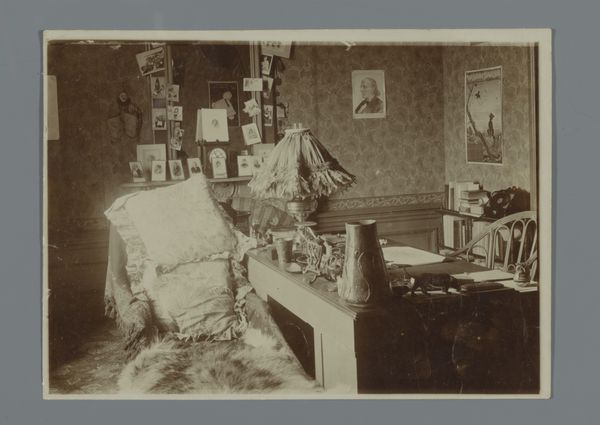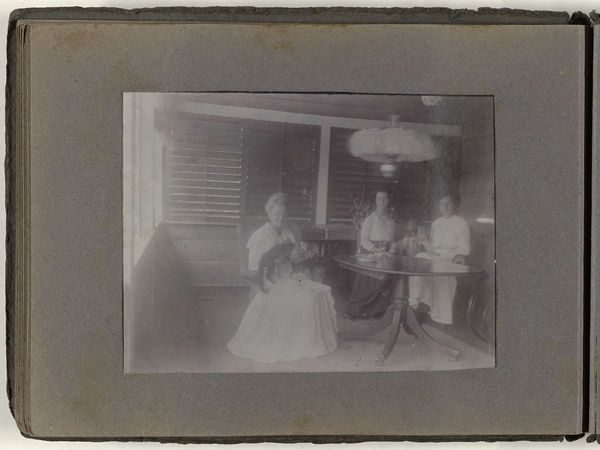
Hedwig Kleintjes en een onbekende vrouw bekijken iets , achter hen hangen 4 Japanse prenten c. 1900 - 1906
0:00
0:00
photography
#
portrait
#
photography
#
japonisme
Dimensions: height 100 mm, width 140 mm
Copyright: Rijks Museum: Open Domain
Curator: Let’s discuss this compelling photograph titled "Hedwig Kleintjes en een onbekende vrouw bekijken iets, achter hen hangen 4 Japanse prenten,” taken around 1900-1906 by Gerard(us) Aalbersberg. Editor: My immediate reaction is how intimate and quiet the scene feels. The lighting is soft and diffused, almost like a stage set for a private moment. The arrangement with the flowers and hanging lamp contributes to this. Curator: Absolutely. It provides a peek into a specific social milieu. These are women of a certain class, enjoying leisure time indoors. Their clothes also place them distinctly in the turn of the century. Editor: And their apparent interest in the object on the table, something they’re both intently looking at. But the "Japanse prenten"—Japanese prints—hanging behind them are a striking detail. They speak volumes about the cultural fascinations of the period. Curator: That's Japonisme, a Western obsession with Japanese art and design that influenced everything from visual arts to fashion. Placing them prominently behind the women demonstrates a certain cultural taste. It served both as status symbol and, maybe more generously, an openness to new forms. Editor: Perhaps it speaks to the role of women in cultivating such aesthetic interests within the domestic sphere. Did Japonisme provide opportunities for women artists or collectors, or was it just another form of cultural consumption? Curator: A great point to interrogate! Did the influx of Japanese art give female artists more freedom, or merely offer another form of cultural appropriation for affluent women to engage with, cementing their position in society? Editor: Thinking about their garments also highlights subtle performances of identity and social status. Were these performances limiting or were there empowering possibilities within them? I am interested to know if this moment reveals these complexities of class, identity, and visual culture. Curator: Considering all of this illuminates how seemingly simple images encode rich social data and enduring questions. Aalbersberg's snapshot of a particular era invites conversations extending far beyond a singular time or location. Editor: Precisely, it prompts us to reflect on the continued complexities around representation, identity, and the consumption of global cultures in the present. The personal gaze feels distant but oddly very pertinent to today.
Comments
No comments
Be the first to comment and join the conversation on the ultimate creative platform.
